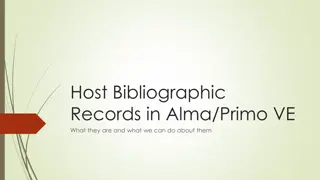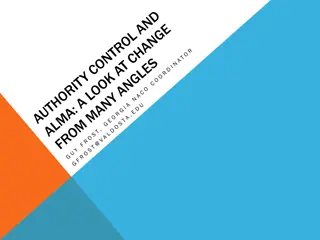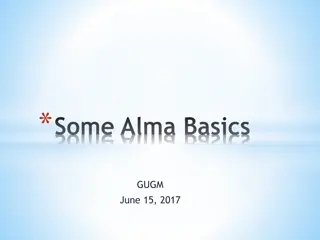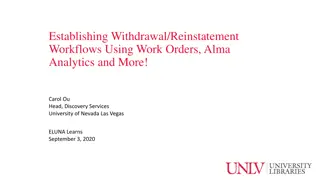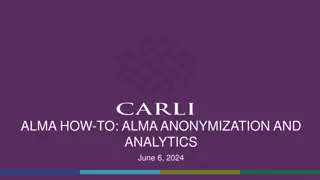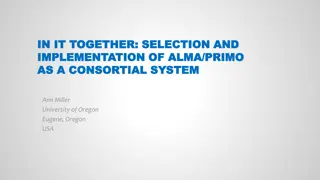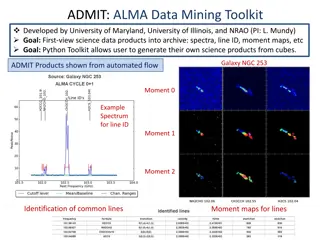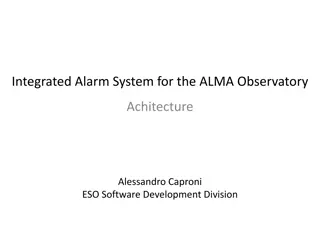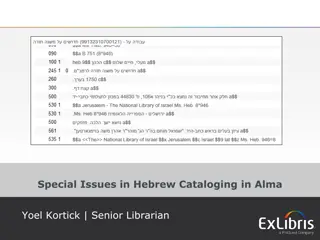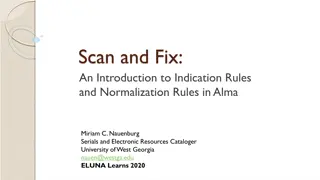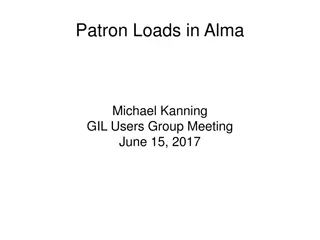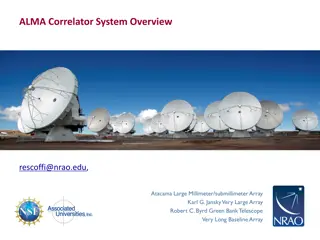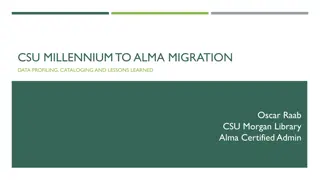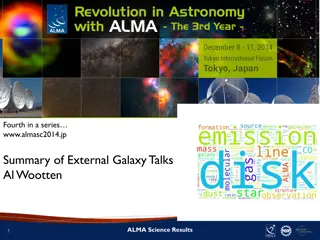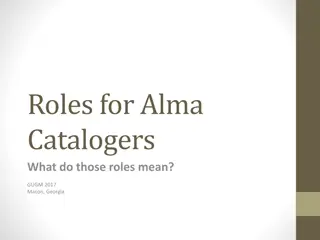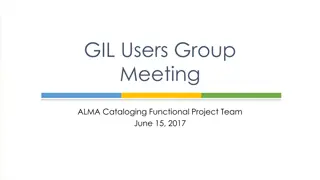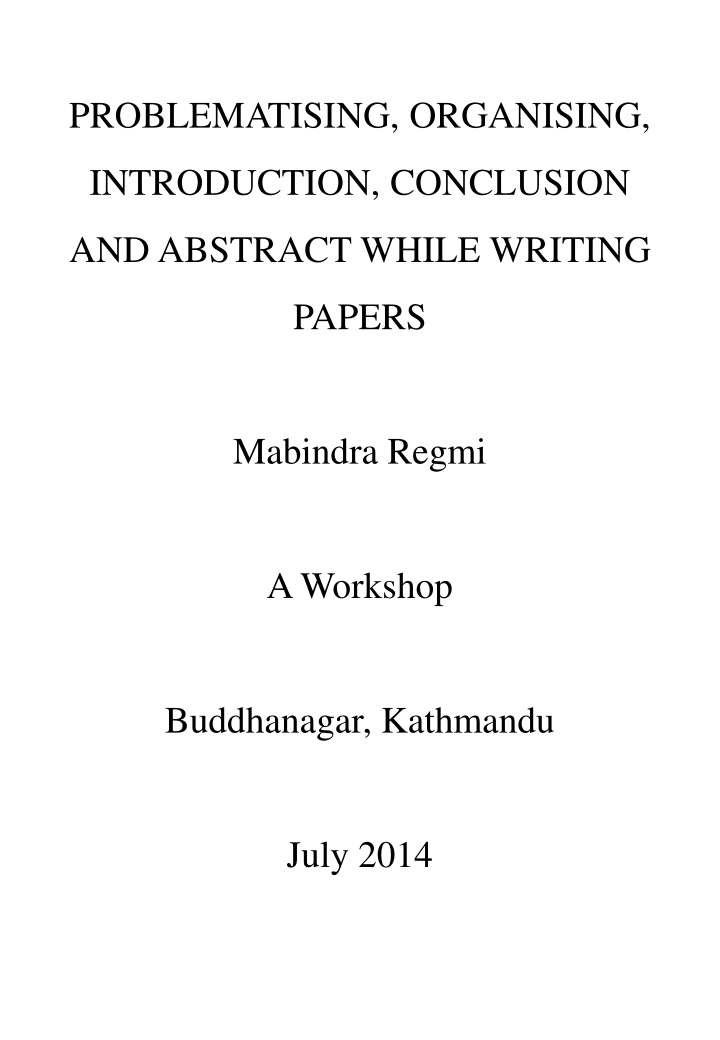
Global Updates in Resource Management - The Alma Way
Highlighting the use of normalization and indication rules in Alma for global record updates, with a scenario on adding $9LOCAL to specific MARC tags. Steps include creating sets, testing rules, filtering records, and running a normalization rule to edit records globally. Helpful links provided throughout the process.
Download Presentation

Please find below an Image/Link to download the presentation.
The content on the website is provided AS IS for your information and personal use only. It may not be sold, licensed, or shared on other websites without obtaining consent from the author. If you encounter any issues during the download, it is possible that the publisher has removed the file from their server.
You are allowed to download the files provided on this website for personal or commercial use, subject to the condition that they are used lawfully. All files are the property of their respective owners.
The content on the website is provided AS IS for your information and personal use only. It may not be sold, licensed, or shared on other websites without obtaining consent from the author.
E N D
Presentation Transcript
PROBLEMATISING, ORGANISING, INTRODUCTION, CONCLUSION AND ABSTRACT WHILE WRITING PAPERS Mabindra Regmi A Workshop Buddhanagar, Kathmandu July 2014
Ask these Questions Do you really understand what is it that you are planning to do? Is it a query to which you are trying to find an answer? Does the query have something to do with your personal/professional world? Do you have an opinion regarding it? Do you think the reader will be interested to read your paper?
Ask these Questions Do you feel that you are contributing something to the storehouse of knowledge or are you simply recycling the existing materials?
Concluding the Paper Have you said what you have to say? Were your arguments/ explanations impressive? What will the reader take away from the paper?
Good Conclusion restate, but not repeat, the thesis. briefly sum up, but not repeat, the main points. end with a sense that the essay is done. provide an emotional closure to the paper.
Introducing the issue Have you written the paper? What is the thesis statement? What is your opinion? How have you addressed the issue in the paper? Main point 1 Main point 2 Main point 3 Counterargument/ refutation
What Style to Adopt Vivid description Startling statistics Rhetorical question
How Long? Depends on how long your paper is Two to three paragraphs
Forming Opinion Make a stand Find solidarity through literature
Points to Ponder Create the context Express clearly on what you are planning to achieve through this paper Clarify your stand on the issue Provide a glimpse of how to plan to go on with the issue
Abstract This study explores how the logic and values of globalization are manifested in international discourses of higher education in relation to scientific knowledge production and how those values are appropriated in national and institutional policies. This study also explores how this confluence of discourses and policies construct scientists in two peripheral countries: Turkey and Mexico. The motivation for this study comes from the largely unexplored impact of geopolitical factors (national and institutional policies for faculty rewards, recruitment, and promotion as well as international evaluation systems) on scientists academic research and publishing activities. Holland et al. s (Identity and agency in cultural worlds. Harvard University Press, Cambridge, MA, 1998) concept of figured worlds informs the analysis. The results demonstrate that globalization-influenced higher education policies and practices that portray scientific knowledge production as commodity can create tensions both for nation-states and individual scientists.
Abstract What does the paper explore? Strategies used to research/ write What does the result show?


